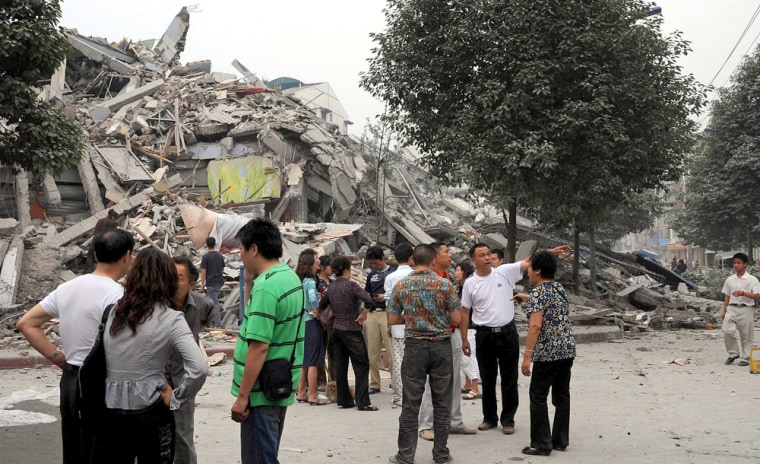Nearly four months after China's devastating earthquake, a government scientist acknowledged Thursday that a rush to build schools in recent years likely led to construction flaws causing so many of them to collapse.
It was the first official admission that low building standards may have been behind the deaths of thousands of children.
Government critics have raised questions about shoddy construction after the 7.9-magnitude quake killed nearly 70,000 people in Sichuan province, including many students crushed to death when their classrooms crumbled.
Ma Zongjin, chairman of an official expert committee on the May 12 earthquake in southwest China, said Thursday that poor quality construction materials were one possible reason more than 1,000 schools were damaged. The government has said about 7,000 classrooms were destroyed, but it has so far not released a tally of how many schoolchildren died.
"In recent years, a lot of school buildings have been built in China and in this process of rapid development, some problems may exist," Ma, a geologist, told reporters in Beijing. "The structure of the school buildings may not be reasonable enough and the related construction materials may not be strong enough."
Unsafe schools?
While the government has promised an investigation and strict punishment for bad construction, there has been no public attempt so far to hold anyone to account.
The issue has become a sensitive political matter for the Chinese government, with parents of dead children staging protests to demand investigations into why schools collapsed even though nearby buildings were left standing. In one case, police pulled grieving parents away from a courthouse as they were trying to file a lawsuit.
Engineers and building experts sent to the disaster zone by the government to study damage have also raised questions about poor construction, bad urban planning and lack of enforcement of building codes.
Often schoolhouses were the only buildings in the area to collapse fully, and experts say China's problem, similar to that in many other parts of the world, was a lack of commitment to safe schools.
But local communist leaders have seemed eager to suppress the issue as they tried to provide for the 5 million people left homeless. Parents and volunteers who questioned authorities were often subjected to detention, intimidation and financial inducements to keep quiet.
A key problem was the lack of reinforcement, Ma said. Large classrooms were often supported by columns that could not withstand major earthquakes, he said.
He did not elaborate, but large classrooms are often considered problematic because they offer relatively little support for rooms in floors above. Also, the presence of large numbers of students makes them more difficult to evacuate in an emergency.
Some disturbing examples of bad construction included a building in Pingwu county constructed near a river bend on unstable beds of sinking soil and shifting sands, and a 15-story building elsewhere that was built without support columns driven into the ground for stability, one expert said in June.
Three years of rebuilding
The earthquake, China's worst disaster in three decades, left another 18,000 people still missing. "Given that it has been three months since the deadly earthquake struck, the hope of survival for those missing is very slim," Shi Peijun, the expert committee's vice chairman, said Thursday.
Shi also said the quake resulted in direct economic and property losses of about $123 billion, more than 90 percent of it in Sichuan province.
According to the Chinese government, up to three years will be needed to rebuild and restore jobs and services. Ma said the construction ministry has sent more than 2,000 experts to study the quake-hit areas and make recommendations for the reconstruction of schools and hospitals.
Since the May quake, the region has been hit by scores of aftershocks. A magnitude 5.7 quake struck the provinces of Sichuan and Yunnan on Saturday, killing at least 38 people. More than 500,000 homes were damaged and 191,000 people were evacuated.
In Huili county, the worst-hit area in Saturday's quake, 27 people were killed. Schools postponed the start of the new semester to the end of October due to a lack of prefabricated materials and tents to build temporary classrooms and dormitories, the official Xinhua News Agency reported.
